- March 21, 2024
Why Do Hamsters Die So Easily? 12 Vet Reviewed Reasons
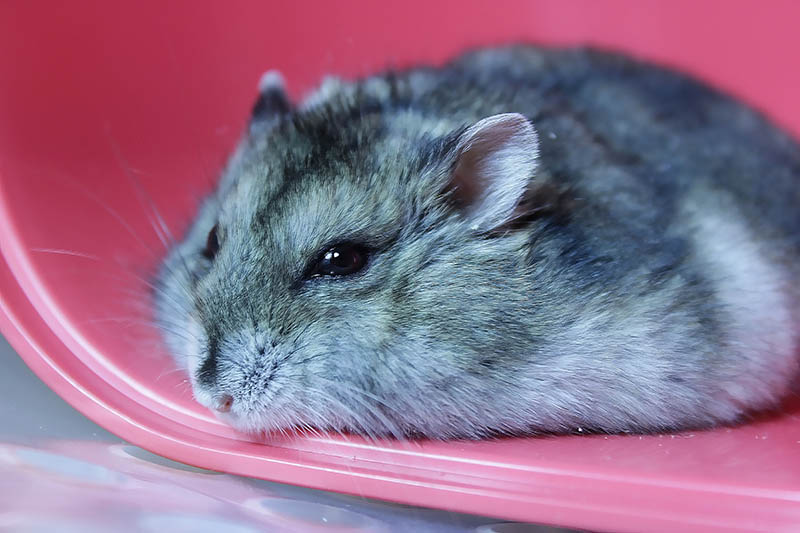
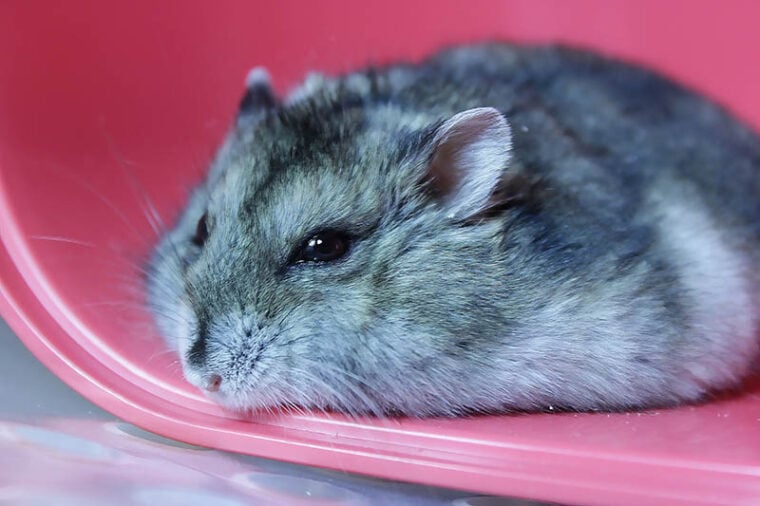

The information is current and up-to-date in accordance with the latest veterinarian research.
Hamsters are fun little animals to live with. Their antics are extremely entertaining to watch, and creating the perfect habitat for them can be part of the enjoyment. They don’t require a daily walk like a dog, and are less demanding of your attention than a cat, but they do still involve a significant amount of responsibility.
Even when you’re seemingly doing everything right, these tiny pets do seem to die more easily than the more robust cat or dog, whether from stress, health problems, or old age. Finding your hamster dead is a sad and stressful experience. Understanding the possible reasons for sudden deaths is important, as it can help you understand if there was anything that could have been improved or done differently, or if it was just bad luck.
We’re going to take a look at 12 reasons why a hamster might die easily, and what you might be able to do about it. But before we do, let’s talk about one very important thing to be aware of when it comes to hamsters:

Is My Hamster Dead or Just Hibernating?
In cold conditions, your hamster may go into hibernation, and you wouldn’t be the first person to confuse a hibernating hamster with a dead one! When hibernating, their bodies feel quite cold and their breathing and heart rate slow down significantly.
So if the temperature has dropped and your hamster has too, monitor them closely for breathing and a heartbeat, and if in doubt, call in an expert; your vet will be able to tell for certain.

The 12 Reasons Why Some Hamsters Die Easily
If your hamster has indeed passed away, and there is no obvious cause of death, you might find an answer here amongst these 12 reasons why hamsters may seem to die easily.
1. Stress
While stress may not be a disease or illness, it can put a big strain on your hamster’s body and result in a weakened immune system. Just like for humans, the immune system is essential when it comes to fighting off illness and disease. When it’s weakened, it is harder for hamsters to fight off any exposure to toxins and/or disease. This can mean the development of an illness or disease that hits hard and fast and can result in a sudden death. Your hamster could show no signs of illness until it’s too late.
Some of the most common causes of stress for a hamster include
- Noisy households
- Close proximity to predator species (eg. cats, dogs)
- Inappropriate size or location of habitat
- Rough handling
Your hamster buddy should have a cage that is at least 100cm x 50cm (40” x 20”). They might be tiny, but a hamster in the wild might travel up to 5 miles in a single night in the hunt for food! You should also provide them with enrichment such as tunnels and exercise wheels. Their cage should be kept away from high traffic areas, drafts, and from the prying eyes of curious cats and dogs.
Although hamsters can be a wonderful first pet for children, it is important that they learn to handle their pets very gently, and only do so with adult supervision. It is far too easy for a squirmy hamster to be squeezed too hard or dropped.
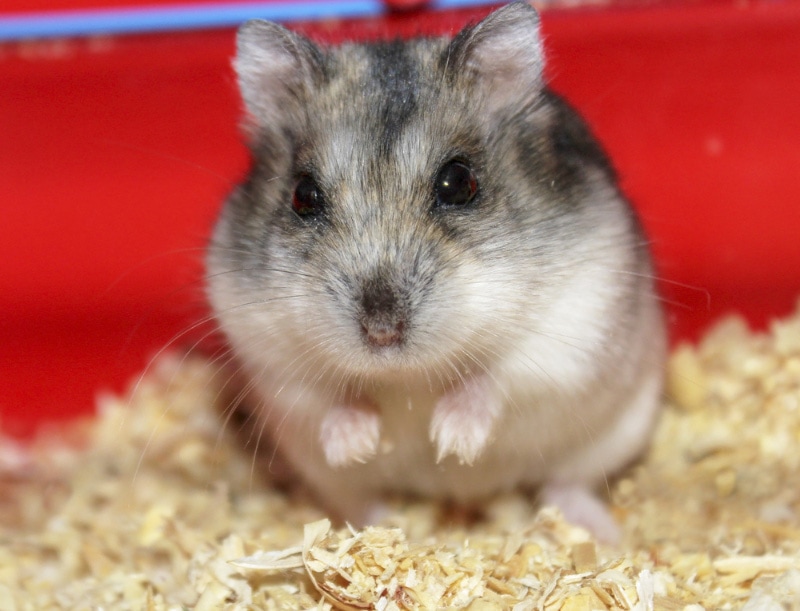
2. Heart Problems
Some hamsters can quickly succumb to heart problems, resulting in what seems to be a sudden death, even if a problem has been brewing for a while.
Here are the serious heart problems that hamsters can develop that owners should be aware of:
- Congestive Heart Failure — This is when the heart muscle weakens until it cannot support the cardiovascular system of the hamster, which results in death. This problem is most commonly seen in older hamsters, but it can develop in hamsters of any age. There are a few signs that might be displayed in the days or hours before death, but they can be hard to detect if not intentionally looked for, and they might not surface at all. These signs include an irregular heartbeat, a blue tint to the skin and/or gums, and a rapid breathing rate.
- Atrial Thrombosis — This is when blood clots, sometimes referred to as blockages, form in one or more of the upper chambers of a hamster’s heart, typically on the left side. This problem is most common in older hamsters.
- Polymyopathy — This hereditary disease tends to progress into heart disease and eventually, failure. It’s caused by a recessive gene, and can also affect the entire musculoskeletal system. It isn’t obvious when a hamster is suffering from this hereditary disease, which can make it seem like a hamster easily or hastily succumbs to death. This disease is common among Syrian Hamsters.
Stress can certainly make these problems worse, but won’t actually cause heart disease. However, if your hamster has a weakened heart, a sudden shock could be enough to send them over the edge.
3. Wet Tail
This term is just a technical way of referring to watery diarrhea, which could be caused by one or many reasons. It’s believed that this condition is most commonly caused by a variety of intestinal bacterial infections, such as Campylobacter or Salmonella. A poor diet, stress, poor hygiene, and habitat overcrowding are thought to contribute to wet tail. Sadly, it most commonly affects younger hamsters, so you could bring one home from the pet store that is already infected with it.
If your hamster has diarrhea that lasts longer than 48 hours, or you notice an unpleasant odor coming from their back end, you need to take them to see a veterinarian.
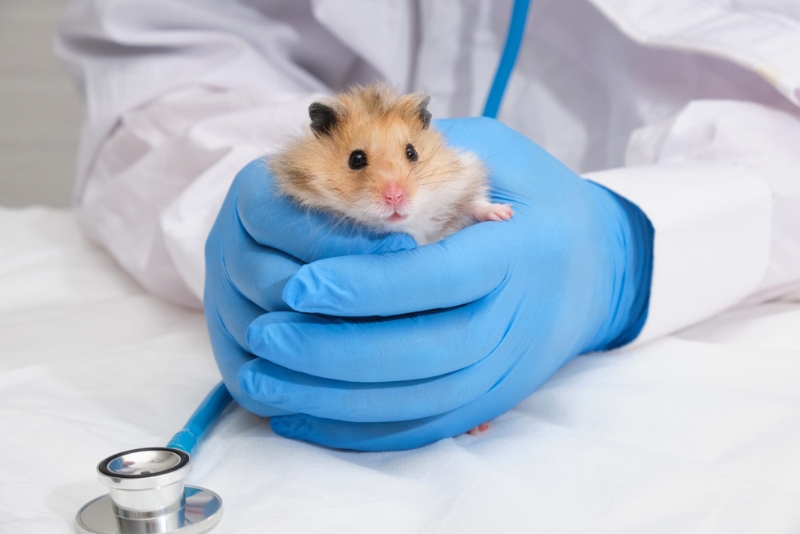
4. Pneumonia
Hamsters are susceptible to pneumonia, especially if their habitats are damp and humid. If a hamster’s habitat is not tended to, their urine, feces, and spilled water can cause harmful bacteria to grow in a habitat, and those bacteria can be carried into the air as humidity increases. Pneumonia in hamsters may cause signs that are easily overlooked or serious signs, such as a fever, depression, mucus discharge, excessive sneezing and/or coughing, and distressed respiratory function.
Regular cleaning of your hamster’s environment is essential to their health and wellbeing. You should remove any damp or soiled material daily, and perform a thorough clean, including a full change of bedding material, weekly.
5. Kidney Disease
Most common in older female hamsters, kidney disease often develops rapidly and results in weight loss, excessive urine production, and increased thirst. Unfortunately, these signs can be overlooked if their water consumption and urine production are not closely monitored.
Keeping a close eye on your hamster’s weight can help you detect various problems. If your hamsters seem to gain or lose weight in a short amount of time, it’s a good idea to schedule a checkup with your local veterinarian. Invest in some good kitchen scales and make a habit out of weighing your hamster regularly, perhaps when doing their weekly cleanout.
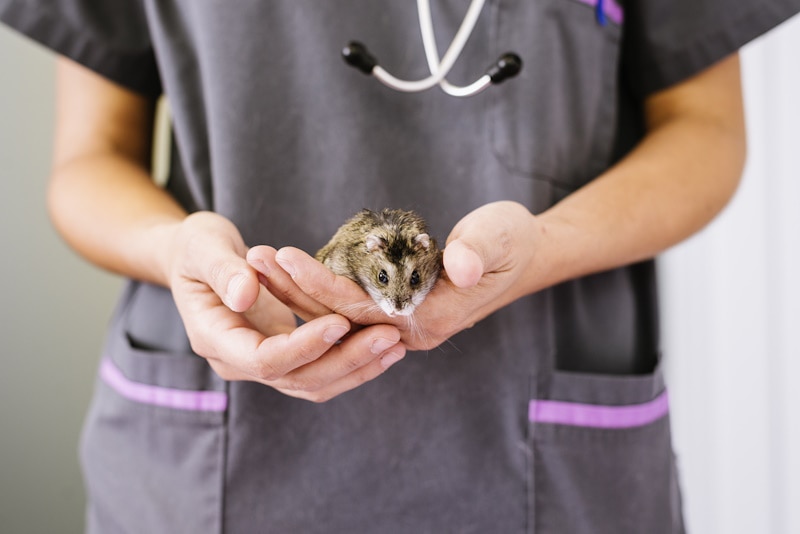
6. Diabetes
You might be surprised to learn that hamsters can get diabetes. This problem develops when the body cannot produce enough insulin, and this prevents the glucose from their food from being absorbed by their cells. Diabetes does not produce many obvious signs aside from increased thirst and excessive urination, and these can be attributed to other problems, like kidney disease. Therefore, it’s important to have a veterinarian diagnose your hamster’s health issues at the first sign of a problem.
Unfortunately, injecting hamsters with insulin is not a practical solution for such tiny creatures, but the condition can sometimes be managed through diet manipulation.
7. Infections
A variety of different infections can take hold of a hamster and threaten their life. For example, hamster polyomavirus is known to result in lymphoma, especially in younger Syrian hamsters. Older hamsters and other types of hamsters, however, are not immune to the problem. Lymphocytic choriomeningitis virus is not a very common infection of hamsters, but it can be fatal. It is a zoonotic disease, which means that humans can also become infected. Fortunately, human infection is very rare, but women who are pregnant, or trying to conceive, should take extra precautions when handling hamsters.
Bacterial and fungal infections are also possible, and are a particular risk in dirty, soiled bedding material. The tiny size of a hamster means that an infection can progress rapidly, which could lead to death in a short amount of time.
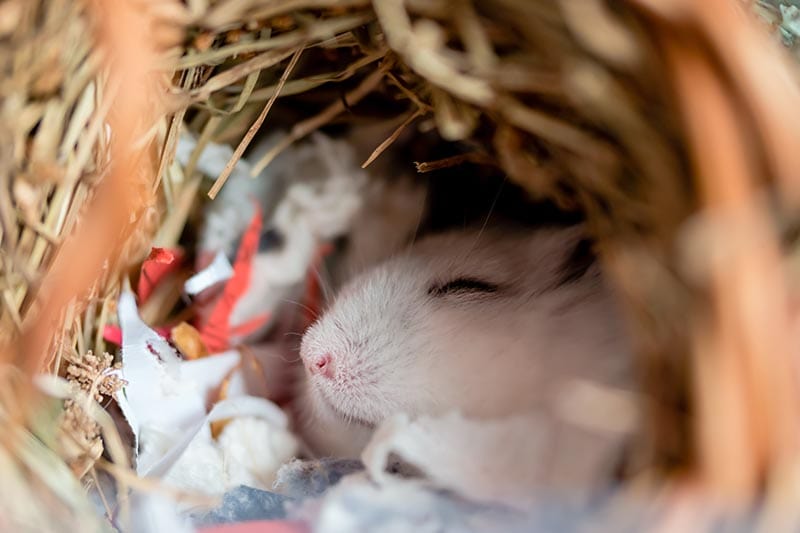
8. Amyloidosis
This genetic condition results in the production of a dense protein called amyloid. It builds up in organs like the kidneys, liver, and even the heart, with these amyloid deposits eventually interfering with organ function. Amyloidosis is most common in female hamsters over 1 year old, and will normally result in acute kidney failure and death. Unfortunately, there is no treatment for this condition.
9. Intussusception
Intussusception occurs when part of the intestine ‘telescopes’ inside itself, resulting in a painful, often fatal, obstruction of the intestine and its blood flow. The most common cause of this condition in hamsters is constipation, but it can also occur with severe or chronic diarrhea; another reason to pay close attention to your hamster’s toileting habits.
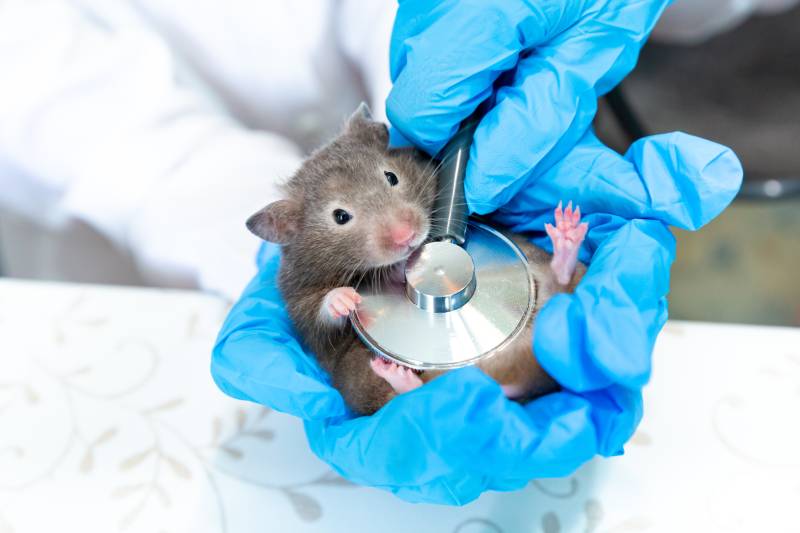
10. Cancer
Cancer can develop in any part of the body, including the organs, the brain, and even the circulatory system. It can be extremely hard to detect the development of cancer in hamsters, so if they succumb to the disease, it could seem sudden.
11. Old Age
Pet hamsters generally only live up to about 3 years, so their death can seem premature and sudden to children and those unfamiliar with the lifespan and needs of these rodents. Once your hamster reaches about 2 years of age, it’s time to think of them as seniors and treat them as such—with grace, softness, and great care—until the end of their life. You may notice that your hamster slows down a little at this point, but no serious signs are obvious when it comes to pinpointing the old age and end of life of a hamster.
If you notice that your aging hamster is having a bit more difficulty getting around, be sure to make adjustments to their enclosure to make things easier for them, and talk to your vet about pain relief – even hamsters get arthritis.
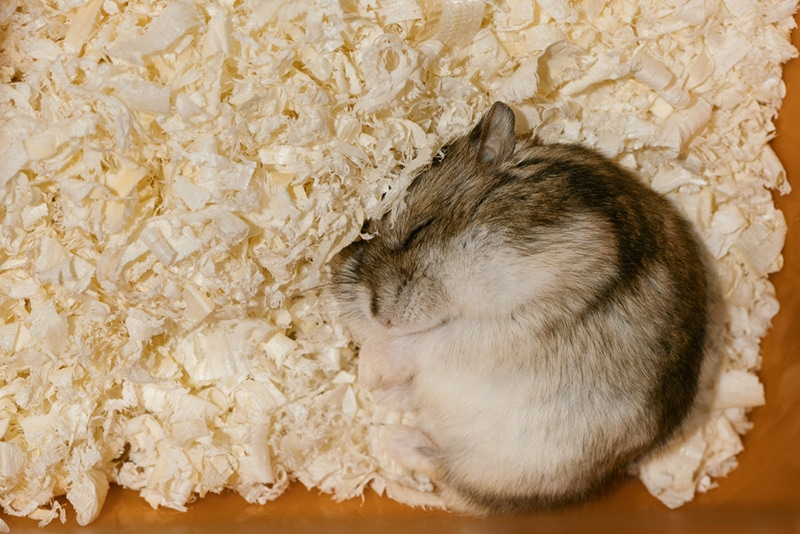
12. Unknown Issues
Sometimes, animals die without any explanation. They might not wake up from a nap, or they may get into an accident in their enclosure. You might have clues to work with so you can figure out the cause of your hamster’s death, or you may sadly find your hamster lifeless without ever figuring out why. Several of the problems we mentioned above may only be properly diagnosed with a postmortem examination, which, understandably, are not performed all that often.
A Final Recap
There are several reasons that a hamster might die easily or suddenly. With proper care and a close eye, we can reduce the risks to our tiny pets, but we cannot stop all deaths from occurring. You might even bring a hamster home from the pet store that is already ill and will die no matter what you do. If you have any questions or concerns about caring for your hamster, don’t hesitate to contact a veterinarian for guidance and advice.
And remember, if you find your hamster lifeless, and cold weather is setting in, check closely; they may just be hibernating.
Featured Image Credit: Dario Stankovic, Shutterstock
Tags
What do you think?
Related Articles

New Puppy Checklist: Gear You’ll Need for Your New Dog
Getting a new puppy is really exciting, but before you welcome them home, it’s important to prepare your space for them. Since puppies need a

How Big Do Mini Poodles Get? Vet Reviewed Average Weight & Growth Chart – Dogster
The information is current and up-to-date in accordance with the latest veterinarian research. Learn more » When you buy a Miniature Poodle, you might not

Can Police Dogs Smell Nicotine? Vet Verified Facts & Info – Dogster
The information is current and up-to-date in accordance with the latest veterinarian research. Learn more » While cigarette sales have been declining steadily for decades,

How Old Is 5 in Dog Years? Vet-Approved Guide to Each Size of Dog – Dogster
The information is current and up-to-date in accordance with the latest veterinarian research. Learn more » A common method for calculating a dog’s age is

